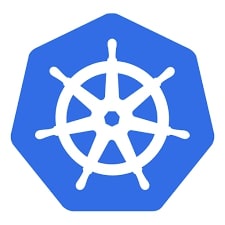So, you've been cruising along with your single-node Kubernetes cluster on AWS, but now you're itching to level up your game. Welcome to the big leagues! It's time to dive into the world of multi-node Kubernetes, where you can take advantage of the full power and potential of this container orchestration platform. In this blog, we'll discuss why you might want to make this migration, the benefits you'll reap, and the steps to transform your solo Kubernetes show into a multi-node masterpiece.
Why Migrate to Multi-Node Kubernetes?
Before we jump into the nitty-gritty, let's talk about why you'd want to make this change. Your single-node setup served you well for learning and testing, but it has limitations. Here are a few reasons to consider migrating:
1. High Availability: Multi-node clusters ensure your applications keep running even if one node goes down. It's like having a backup in case your primary server decides to take a coffee break.
2. Scalability: Need more horsepower? Multi-node clusters can be scaled horizontally, which means adding more nodes to handle increasing workloads.
3. Improved Resource Isolation: Isolating workloads becomes more manageable in a multi-node setup, reducing the chances of one application hogging all the resources and causing trouble for others.
4. Fault Tolerance: Multi-node clusters offer redundancy, so you're less likely to face catastrophic failures. Your application keeps running even if some nodes misbehave.
5. Enhanced Security: With more nodes comes more room for security measures. You can distribute your pods across nodes, improving security and resilience.
How to Migrate to Multi-Node Kubernetes on AWS
Alright, you're convinced. It's time to go multi-node. Here's a simplified guide on how to do it:
1. Provision Additional EC2 Instances:
- Head over to your AWS console and spin up a few more EC2 instances. These will become your new Kubernetes nodes. Make sure to configure them appropriately, just like you did for your single-node setup.
2. Set Up Your Control Plane Node:
- One of your EC2 instances should act as the control plane node, just like your original setup. Install Kubernetes components on this node, and initialize your cluster using
kubeadm init.
3. Join Worker Nodes:
- On the other EC2 instances, join them as worker nodes by running
kubeadm join. This connects your control plane to your worker nodes and forms the multi-node cluster.
4. Deploy Networking:
- Choose a networking solution for your multi-node cluster. Popular options include Calico, Flannel, and Weave. Deploy your chosen network plugin to ensure pod-to-pod communication across nodes.
5. Distribute Workloads:
- Now comes the fun part. Start distributing your workloads across your multi-node cluster. Use Deployments, StatefulSets, and Services to make your applications highly available.
6. Load Balancing:
- Consider setting up a load balancer to distribute traffic among your nodes, improving both performance and availability.
7. Monitor and Scale:
- With a multi-node setup, monitoring becomes even more crucial. Implement monitoring tools like Prometheus and Grafana to keep a close eye on your cluster's health and performance. Scaling your applications to handle traffic spikes is also easier in this setup.
Final Thoughts
Migrating from a single-node Kubernetes cluster to a multi-node setup on AWS is a logical step if you're looking to take advantage of Kubernetes' full capabilities. The increased resilience, scalability, and flexibility are well worth the effort. Just keep in mind that with more nodes comes more complexity, so plan your migration carefully, and be prepared to handle the new challenges that come your way. Happy clustering!


No comments yet